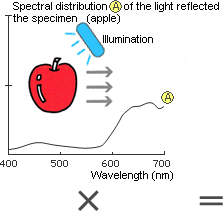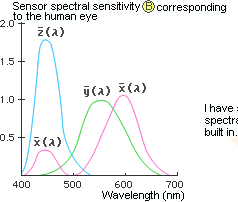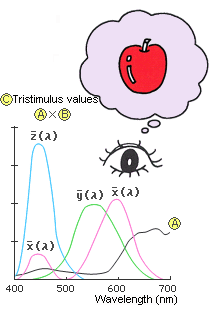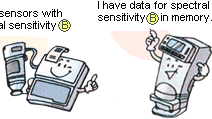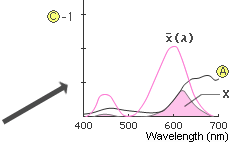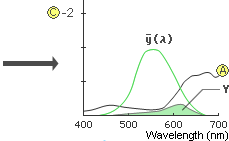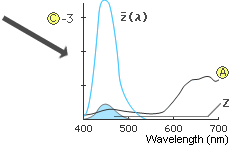Precise Color Communication
 |
We discussed the colors of the spectrum (red, orange, yellow, green, ...) in Part II-2.
Of these colors, red, green, and blue are generally considered the three primary colors of light.
This is because the eye has three types of cones (color sensors) which are sensitive to these three primary colors
and which allow us to perceive color. Figure 19 shows the spectral sensitivity curves corresponding to the human eye,
according to the CIE definition of the 1931 Standard Observer.
These are referred to as the color matching functions.
|
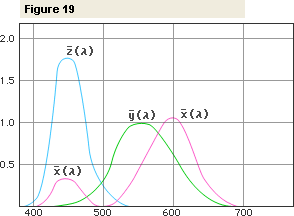 |
As shown in Figure 20b, the tristimulus method measures the light reflected from the object using three sensors filtered to have the same sensitivity |
|
|
|
Figure 21 shows how the tristimulus values X, Y, and Z are determined. Light with spectral distribution
|
|
| 6/9 | ||
|
|











